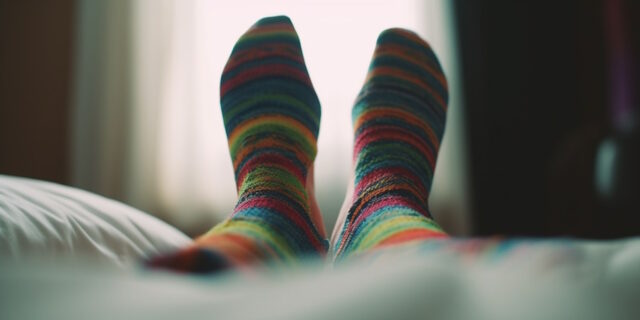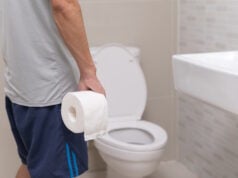
However, this might not reveal the full picture about a person’s cardiovascular health, since some people can have high blood pressure while lying down and normal blood pressure while they are sitting.
Study results shared at the American Heart Association’s (AHA) Hypertension Scientific Sessions 2023 suggest that people who only have high blood pressure while lying down are at a similar risk for heart failure, stroke, coronary heart disease, fatal coronary heart disease, and all-cause mortality to people with high blood pressure while both sitting and lying down.
Blood pressure measures the force of blood pressing against the blood vessels that carry blood away from the heart. A blood pressure measurement involves two numbers: the systolic number, which measures when the heart muscles contract, and the diastolic number, which measures when the heart is at rest.
Typically, when someone’s blood pressure is normal, the reading is 120/80 millimeters of mercury (mm Hg).
For this study, researchers wanted to see if high blood pressure while lying down, also called supine hypertension, was a risk factor on its own for adverse cardiovascular disease. In other words, would someone who only had high blood pressure lying down still be at risk for poor health outcomes?
Researchers used data from the Atherosclerosis Risk in Communities (ARIC) Study. They ended up including 11,369 participants in their analysis.
They excluded individuals with a history of coronary heart disease, heart failure, or stroke. Researchers defined supine high blood pressure as any reading greater than or equal to 130 mm Hg systolic or any reading greater than or equal to 80 mmH g diastolic while lying down. They defined seated high blood pressure by the same parameters but while sitting rather than lying down.
Among the participants, researchers found that 16% had normal blood pressure while seated but high blood pressure while lying down. They also found that 74% of participants who had high blood pressure while seated also had high blood pressure while lying down.
The average follow-up time was 25–28 years. The investigators found that people with seated and supine high blood pressure were at an increased risk for coronary heart disease, heart failure, stroke, fatal coronary heart disease, and all-cause mortality.
The risk was similar for participants who only had high blood pressure while lying down. The researchers also found that the results did not differ based on the use of medication for high blood pressure.
Dr. Michael Broukhim, a board-certified interventional cardiologist at Providence Saint John’s Health Center in Santa Monica, CA, not involved in the research, commented with his thoughts on the study results to Medical News Today:
“High blood pressure is related to an increased risk for cardiovascular disease including coronary artery disease, stroke, kidney disease, heart failure, and premature death. This study demonstrates that measuring seated blood pressures may miss hypertension in a significant proportion of middle-aged adults.”
Dr. Cheng-Han Chen, interventional cardiologist and medical director of the Structural Heart Program at MemorialCare Saddleback Medical Center in Laguna Hills, CA, also not involved in the study, further commented that the findings had important implications for blood pressure management strategies.
“This research shows that we may miss the diagnosis of hypertension in many patients if we only measure their blood pressure while sitting, rather than lying down,” he told us. “This gives us an important opportunity to better address an important cardiovascular risk factor.”
Still, the study cannot establish a causal relationship between any of the factors that the researchers examined. It also appears that more measurements of blood pressure may have provided even more accurate information.
Furthermore, the study has not yet undergone peer review.
Dr. Keith C. Ferdinand, professor of medicine at the Tulane University School of Medicine, not involved in the research, commented to MNT on the study presented at the AHA conference:
“Study abstracts are always interesting. We need confirmation in full peer-reviewed analyses. We would think that supine blood pressure would be a risk because in that particular position the blood pressure is conventionally lower than in a seated position. And it may be a surrogate for someone in whom the blood pressure does not appropriately lower when totally at rest, including the nocturnal period.”
This study indicates that it may be helpful to measure blood pressure while people are lying down to obtain a more complete picture of their cardiovascular health. However, there are certain barriers to implementing this in a clinical setting.
Dr. Ferdinand noted that “[c]linicians are presently under great time constraints.”
“[They are] often employed by integrated healthcare systems who monitor the numbers of patients that are seen on a regular basis and make assessments of their reimbursement based on a 15-minute conventional visit,” he told us.
He explained that “[a]dding the supine blood pressure would be difficult because it not only would complicate the intake […] but would give additional information that the clinician may not have time to appropriately analyze and make a decision.”
However, Dr. Broukhim noted that it could be plausible to implement measurements of blood pressure while in the supine position for certain individuals.
“I think it is reasonable to obtain a supine blood pressure in patients presenting to the office if they have a normal seated blood pressure,” he commented. “If there is an elevated clinical suspicion of hypertension, an ambulatory systolic blood pressure monitor should be utilized, which will likely demonstrate if supine hypertension is present while the patient is at home.”
Dr. Chen similarly noted that: “These findings may play a big role in how we take blood pressure readings in the future. While not entirely feasible in every setting, we should probably adopt supine blood pressure measurements as standard technique whenever possible.”
People who are concerned about their blood pressure can talk with their doctor about options for accurate measurement. When blood pressure is high, people can work with their doctor to develop an individualized treatment plan. This may involve taking certain medications, as well as lifestyle changes like quitting smoking and limiting alcohol.
This article originally appeared here and was republished with permission.












